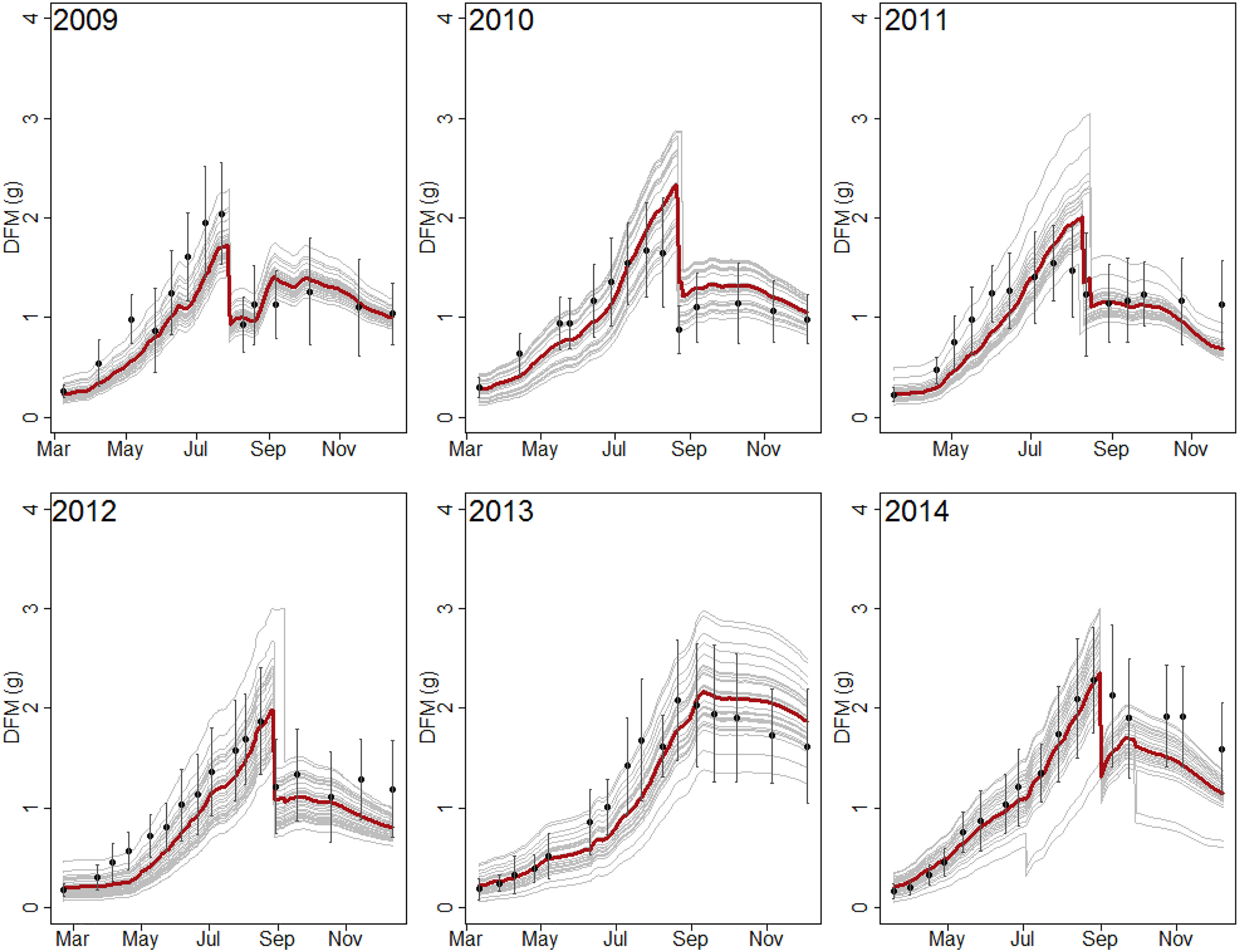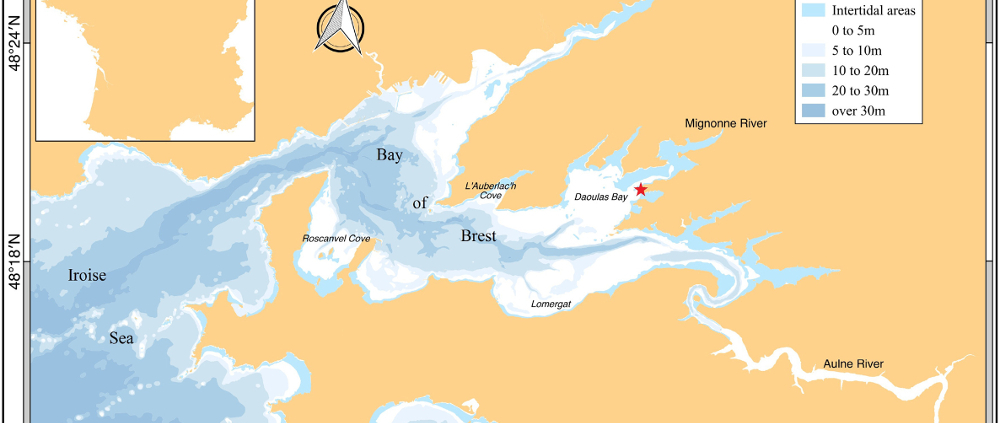Modeling reproductive traits of an invasive bivalve species under contrasting climate scenarios from 1960 to 2100
Mélaine Gourault, Sébastien Petton,Yoann Thomas, Laure Pecquerie, Gonçalo M. Marques, Christophe Cassou, Élodie Fleury,Yves-Marie Paulet et Stéphane Pouvreau
HIGHLIGHTS
- The DEB model available for the Pacific oyster was applied in a new coastal environment: the bay of Brest (France).
- This version was successfully calibrated using a new dataset covering 6 years (from 2009 to 2014) of field monitoring.
- The model successfully predicted in detail the complex reproductive processes of C. gigas, especially its spawning behavior.
- Hindcasting and forecasting simulations of the reproductive phenology of C. gigas were performed using IPCC scenarios.
ABSTRACT
Identifying the drivers that control the reproductive success of a population is vital to forecasting the consequences of climate change in terms of distribution shift and population dynamics. In the present study, we aimed to improve our understanding of the environmental conditions that allowed the colonization of the Pacific oyster, Crassostrea gigas, in the Bay of Brest since its introduction in the 1960s. We also aimed to evaluate the potential consequences of future climate change on its reproductive success and further expansion.
Three reproductive traits were defined to study the success of the reproduction: the spawning occurrence, synchronicity among individuals and individual fecundity. We simulated these traits by applying an individual-based modeling approach using a Dynamic Energy Budget (DEB) model. First, the model was calibrated for C. gigas in the Bay of Brest using a 6-year monitoring dataset (2009–2014). Second, we reconstructed past temperature conditions since 1960 in order to run the model backwards (hindcasting analysis) and identified the emergence of conditions that favored increasing reproductive success. Third, we explored the regional consequences of two contrasting IPCC climate scenarios (RCP2.6 and RCP8.5) on the reproductive success of this species in the bay for the 2100 horizon (forecasting analysis). In both analyses, since phytoplankton concentration variations were, at that point, unknown in the past and unpredicted in the future, we made an initial assumption that our six years of observed phytoplankton concentrations were informative enough to represent “past and future possibilities” of phytoplankton dynamics in the Bay of Brest. Therefore, temperature is the variable that we modified under each forecasting and hindcasting runs.
The hindcasting simulations showed that the spawning events increased after 1995, which agrees with the observations made on C. gigas colonization. The forecasting simulations showed that under the warmer scenario (RCP8.5), reproductive success would be enhanced through two complementary mechanisms: more regular spawning each year and potentially precocious spawning resulting in a larval phase synchronized with the most favorable summer period. Our results evidenced that the spawning dates and synchronicity between individuals mainly relied on phytoplankton seasonal dynamics, and not on temperature as expected. Future research focused on phytoplankton dynamics under different climate change scenarios would greatly improve our ability to anticipate the reproductive success and population dynamics of this species and other similar invertebrates.

Figure 4: Oyster growth and spawning simulations obtained by the DEB model compared with observed data from 2009 to 2014 (DFM = Dry Flesh Mass). Observed DFM is represented by black dots with standard deviation bars (n = 30). Grey lines represent individual growth trajectories simulated by the model. The dark red bold line represents the mean of the 30 trajectories.
REFERENCE
The present study, was aimed to improve our understanding of the environmental conditions that allowed the colonization of the Pacific oyster, Crassostrea gigas, in the Bay of Brest since its introduction in the 1960s. It was also aimed to evaluate the potential consequences of future climate change on its reproductive success and further expansion.





